How to Solve It: A New Aspect of Mathematical Method (Princeton Science Library)
Original price was: $49,59.$14,99Current price is: $14,99.
- 100% Satisfaction Guaranteed!
- Immediate Digital Delivery
- Download Risk-Free
✔ Digital file type(s): 1𝐏𝐃𝐅
A perennial bestseller by eminent mathematician G. Polya, How to Solve It will show anyone in any field how to think straight. In lucid and appealing prose, Polya reveals how the mathematical method of demonstrating a proof or finding an unknown can be of help in attacking any problem that can be “reasoned” out―from building a bridge to winning a game of anagrams. Generations of readers have relished Polya’s deft―indeed, brilliant―instructions on stripping away irrelevancies and going straight to the heart of the problem.
72 reviews for How to Solve It: A New Aspect of Mathematical Method (Princeton Science Library)
You must be logged in to post a review.

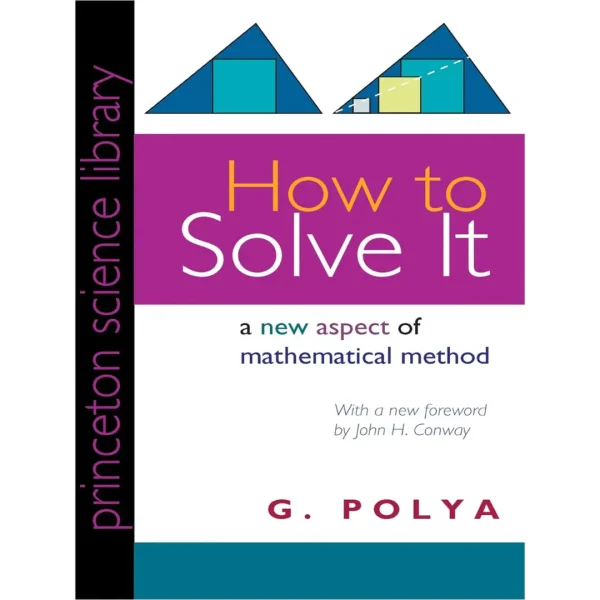
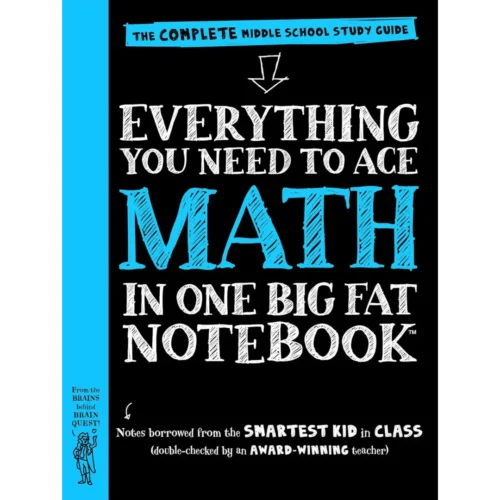
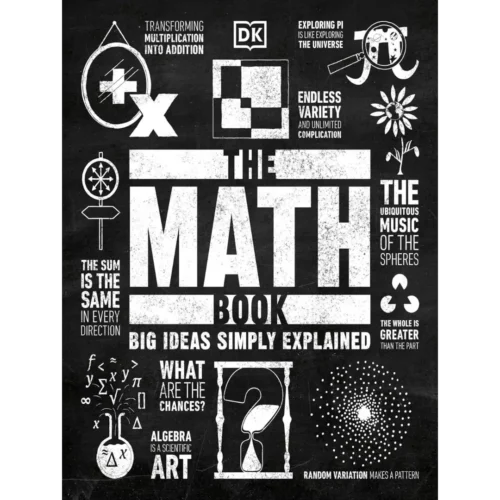
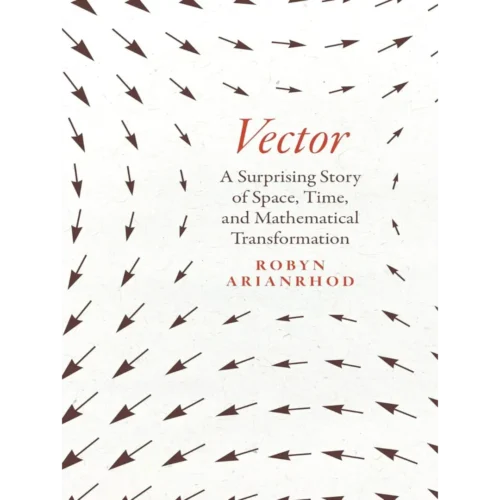
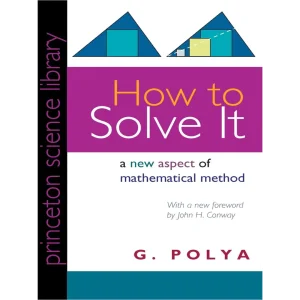
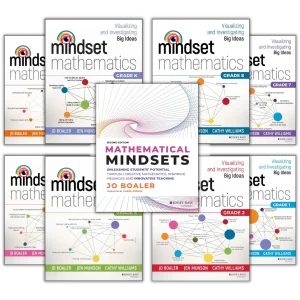

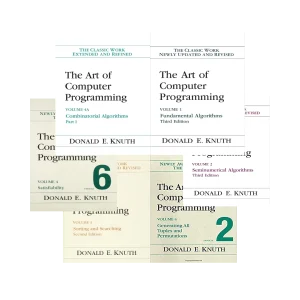
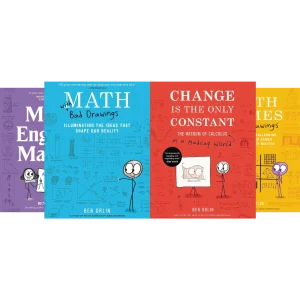
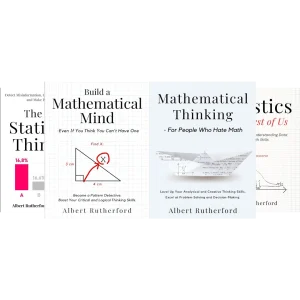
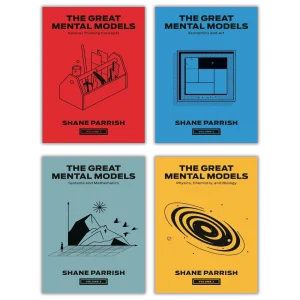
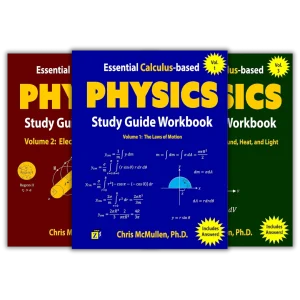

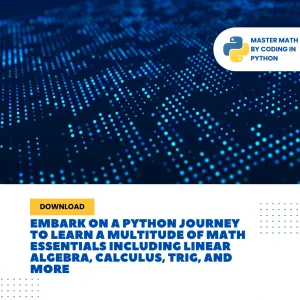
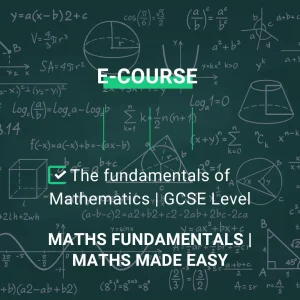
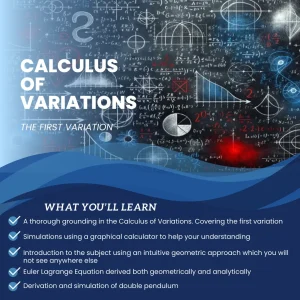
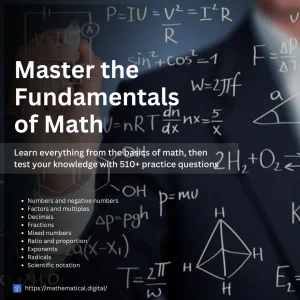
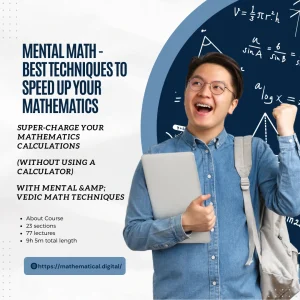
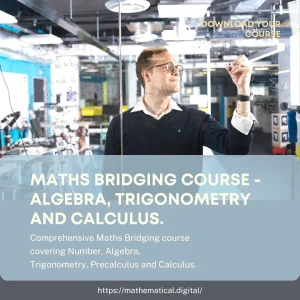
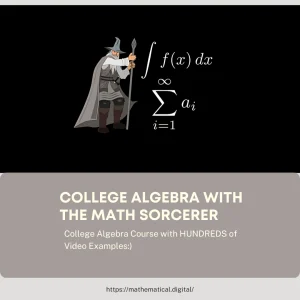
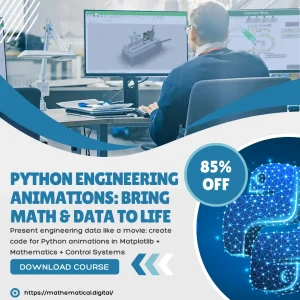
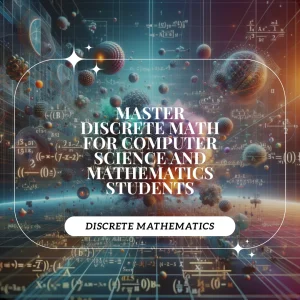
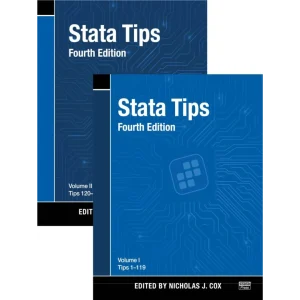
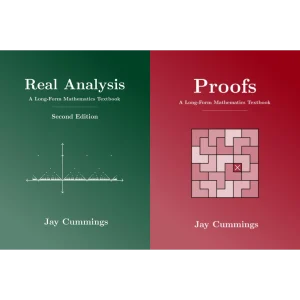
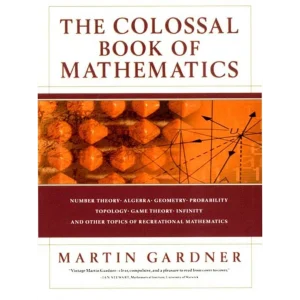
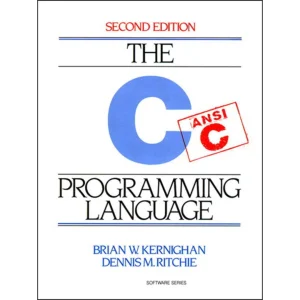
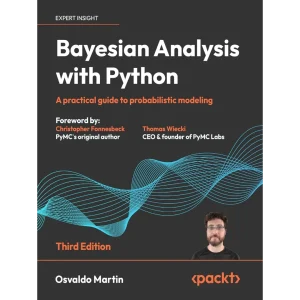
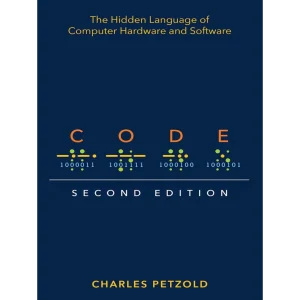
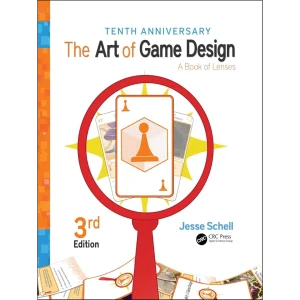
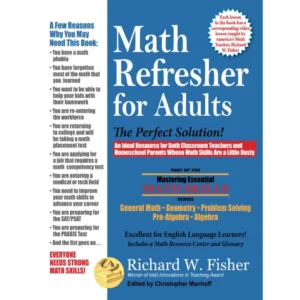
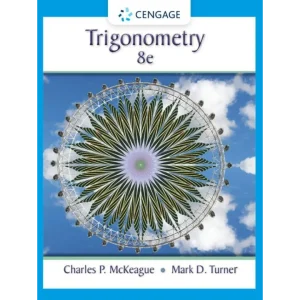
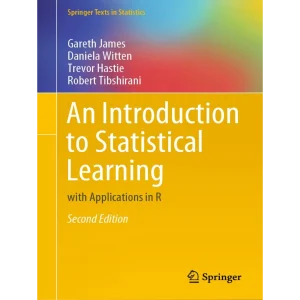

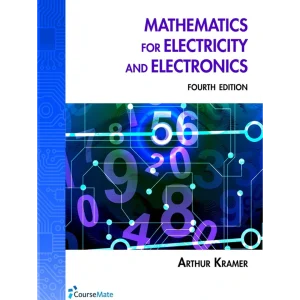
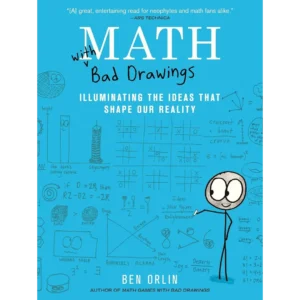
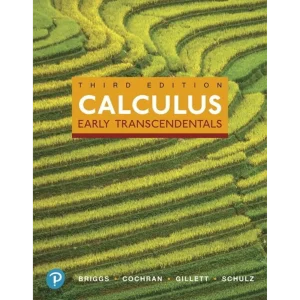
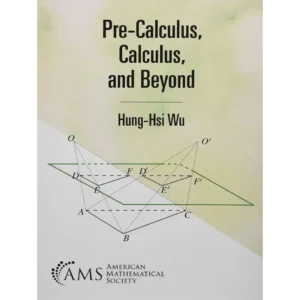
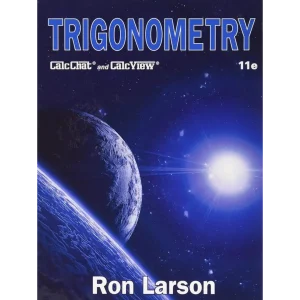
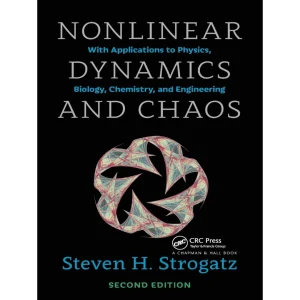
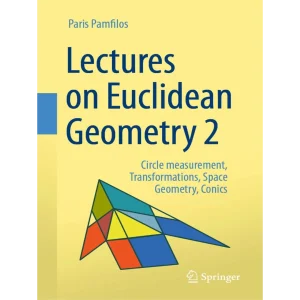
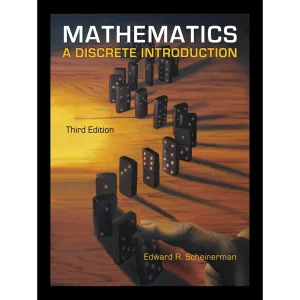
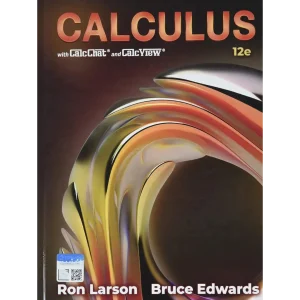
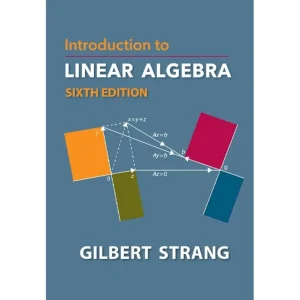
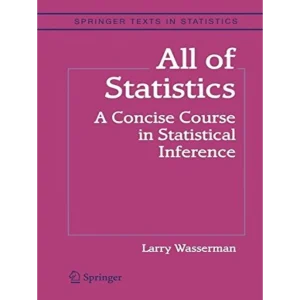
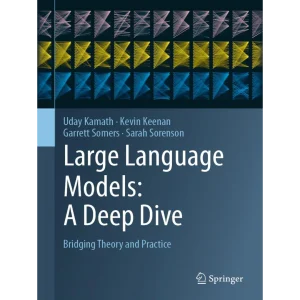
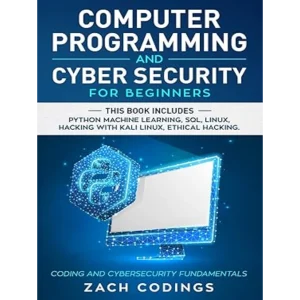
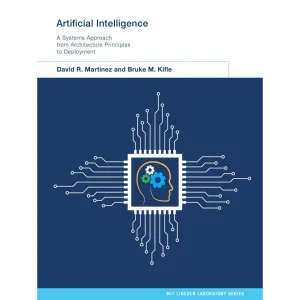
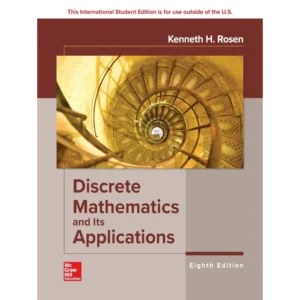
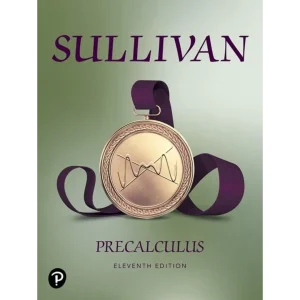

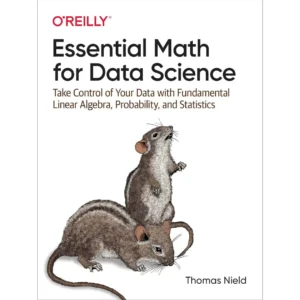
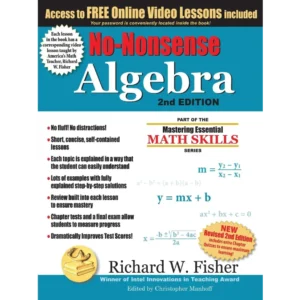
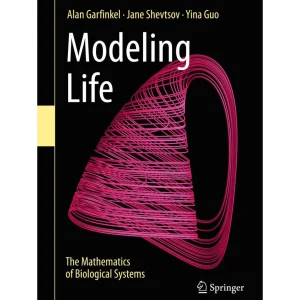

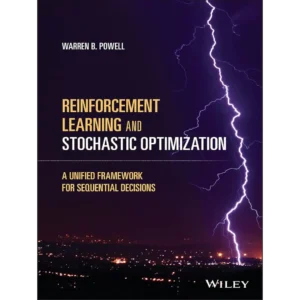
Sandra Feder –
Are you like a dog with a bone when you’re working on a brain teaser? After pages of scribbles, do you get a big grin on your face when you turn to the answers and say: “I’m right!” Then this book is for you.
And if you’re not yet a die-hard problem-solver? You should step right up, too. You may get hooked.
G. Polya’s book is based on the fact that, if we study how someone does something successfully, we can learn to do it successfully as well. How To Solve It is an application of ‘heuristics’ to solving problems.
There are certain mental operations useful in solving problems, any sorts of problems. Polya (who was an eminent mathematician and former Professor of Mathematics at Stanford University) describes and illustrates the most usual and useful of these operations, in a way that is irresistible and eye-opening.
These useful mental operations are organized according to when they come into play during the four steps to solving a problem. 1. You have to understand the problem. (Not as easy as it sounds.) 2. Find the connection between the data given and the unknown. Conceive the idea of a plan for the solution. 3. Carry out the plan. 4. Examine the solution obtained.
If you take some time and try to solve the problems selected to illustrate each mental operation, you will be well-rewarded. You will likely discover something surprising about your own problem-solving methods, and improve them in the process. You will definitely discover many new ideas and techniques to add to your arsenal.
For example, a first impulse when confronted with a problem is often to try to ‘swallow it whole’ — to try to meet all of the conditions of the problem at once. G. Polya suggests keeping only part of the condition, and dropping the other part. This can lead you straight to a solution you might otherwise have completely missed.
His techniques help you to stand back and get to the heart of the problem, rather than getting lost in it.
Something else I liked very much about his book is his encouragement to guess, or to reason ‘plausibly.’ While the final proof must be strictly logical, “Anything is right that leads to the right idea.” Problem-solving has every right to be fun, as well as purposeful.
Dennis Mitton<span class="a-icon a-profile-verified-badge"><span class="a-profile-verified-text"></span></span> –
A really helpful book that goes way beyond math. In our hurry to get through algebra we almost completely sidestep problem solving in teaching. It’s true that we have `story problems’ but they’re usually just applications that restate the chapter’s contents. That’s why so many people get to a class like physical chem in college and flounder: they’ve never really been taught how to solve a problem only to regurgitate what’s been read. This book by Polya fills in that gap.
More than that, though, this book is useful for life in general. Much of life is a leap from one decision to another and this book will help in looking at all problems and decision from new angles. (See Polya’s book “Plausible Thinking” for lots more detail on this subject.)
Like in his other books the author has a knack for making the difficult seem a whole lot easier but parts can still be heavy going. Well worth the trudge, though.
Marty N. –
Polya struck gold with this book! “How To Solve It” contains a simple, 5 step method for solving problems that’s applicable in multitudes of disciplines. While the emphasis of this book is on story problems; Polya’s method for problem solving is useful in areas such as computer programming, automotive troubleshooting, electronics repair, heating and cooling services, research writing, and much more.
I am constantly recommending this book to anyone in college. You can read the method and all the examples, or just read the method and a few examples. This book is easy to read, extremely relevant to today’s promising careers, and can be understood in only 4 hours.
nightowl03d –
This is a wonderful book. On a first reading it may seem a little confusing because the heuristics are organized alphabetically, rather than pedantically. This is not hard to overcome because Polya helpfully boldfaces related heuristics and by following the suggested threads you can get a fairly smooth read on the first reading. The way I dealt with it was I put sticky notes on the topics as I read them, so I could skim the ones I had already looked when threads hit a topic repeatedly.
I read this book many years ago, but it is still by my work station. I consult it when I get stuck on a problem, the heuristics do work.
For a first reading, the flipping around is annoying, but for reference purposes, the alphabetical order of the heuristics is quite convenience. I suspect that the first reading will not be your last, so the author’s tradeoff was the right one.
MathMan –
I know the original version seemed like it would be great for someone that study math or physics and was heavily involved with proofs. However after reading the whole book and with some time I was able to really apply it to how I solve engineering problems. I will be honest it took some trial and error but within a year I was able to completely changed the way I solved problems (i.e. it needed an overhaul). The area I use it the most is thermal fluid systems and have had many complements on the way I articulated or solved problems, and I’m not a genius. The book is helpful and for the price you could take away a couple of items with out a hit in the pocket and just be that much better at figuring out problems.
Herbert C. Meyer –
If you want instructions on how to become a genius, read and practice this book. If you don’t want to become a genius, but want to become a killer engineer, accountant, physicist, doctor, scientist, teacher or any other professional using math, read and practice this book.
Modern Math texts cite this book constantly. They elevate the 5 step process to the word of the (something). Unfortunately, the rest of the text is about performing step 3, solving the algebraic equation. Step 2, writing the equation is the harder part for most students. Practice step 2 every day, and you will become master of time and space. We got computers to do step 3, that’s not the hard part.
I tell students this book is about how to solve word problems. It is not about math, but how to use it.
I found a copy of it in a stack of books in a sandwich shop on Main street. It belongs in every stack of books everywhere. It will improve the world.
A. Reader –
There is a reason that this book has been in print for decades. It should be required reading for teachers, students, and anybody interested in thinking. Problem-solving is a useful skill that can be learned. Polya does the teaching.
William J. Romanos, III –
Every teacher and parent should read this book. Every person interested in problem solving should also read it.
This book is not just about mathematical methods, mathematical problem solving, or teaching mathematics. It is about solving problems. It presents concrete methods (or heuristics) and illustrates by guiding the reader using these methods through clear and cogent examples.
The problem solving insight this book provides is extremely useful. It is about how to go about solving a problem. There are many different ways to approach a difficult problem and often in complex problem solving one does not know where to begin to even think about the problem.
I recall Andrew Wiles, the mathematician who proved Fermat’s Last Theorem (a very famous, long-lasting, and seemingly unproven theorem – unproven for centuries), discussed how during his initial work on the problem, work which ultimately took Wiles about seven years to figure out how to prove, and then to go ahead and prove the theorem, had to study problem solving methodologies just to know how to approach the problem. He needed to learn how to attack the problem – where to begin.
This book is great for learning the different approaches to problem solving. One method discussed in detail is to work similar problems or simpler problems that are similar to the main problem. This allows one to start gauge the issues surrounding the problem and the assist the mind in thinking about the problem and its boundaries.
Anyone interested in becoming a better problem solver, a better teacher, or a parent trying to teach or help their children learn mathematics or science (or to help them with their homework – but to do so by teaching advanced problem solving methods implicitly), then this book is for you. It is not a difficult book and you do not have to be an expert in mathematics or mathematically inclined.
Duy D. Dao –
Very interesting book on how to solve problems, which can be applied to both mathematical and real-life problems. It contains general themes of problem-solving, attitudes one should have towards problems, and detailed methods of how to go about solving problems. It also discusses the optimal teacher-student relationship in the context of problem-solving.
Charlie –
If you are a student, this book is for you. If you are into self-betterment, then this book is for you. Basically, if you want to learn how to think about problems and potential solutions, then this is for you.
Clearly written albeit math-oriented.
Epictetus –
I had had this book for some time and never read it except for a glance or two. A few days ago I sat down after a successful stint at a pure maths problem and applied myself fully to this book. Wonderful! I was particularly taken by the claim in the introduction, by Sutherland, that Polya is concerned with helping show how to think. Just as a golf coach shows you how to hold the club, the tool of the game, as well as being concerned with getting the ball into the hole, the solution, so Polya shows one how to exactly adjust one’s mental grip on the golf club of mathematical and general problem solving. This is a key part that most textbooks on maths omit.
An example of the kind of thing that is very useful in this book is the following short quote from Polya: “Even fairly good students, when they have obtained the solution of their problem and written down neatly the argument, shut their books and look for something else. Doing so, they miss an important and instructive phase of the work. By looking back at the completed solution, by reconsidering and reexamining the result and the path that led to it, they could consolidate their knowledge and develop their ability to solve problems…. There remains always something to do; with sufficient study and penetration we could improve any solution, and, in any case, we can always improve our understanding of the solution.”
Highly recommended. If you are serious about either learning maths or solving problems of any kind, this book is worth buying (and reading.)
Steve Schwartz (LSAT Unplugged & LSAT Blog) –
As a professional LSAT tutor/blogger in NYC, I found this book to offer simple advice on problem solving and logical thinking. It’s useful because it gives you a framework to identify and analyze the relationship between evidence and conclusion.
The book gives you some questions to ask yourself about any Logic Game or Logical Reasoning stimulus.
When to read it: Before you begin studying or when you need a break.
Emre Sevinç –
After more than 50 years, Polya’s advice on tackling problems is still worth reading. But be warned, this is not the latest, brightest, trendiest, best-selling “problem solving book” out there that target MBAs or a kind of personal self-development book. Its author had contributed to important fields of mathematics and he had been through many problems, many difficulties, many students and many different questions by those students.
If you’re a young but eager student who faces problems in math (or in natural sciences), a person trying to solve some puzzles or practical problems, or a researcher about to start a long and unguaranteed journey in order to solve a big problem then you owe yourself to have this classic on your bookshelf, or better on your table.
I’d like to quote some important passages from the book but last time I checked my notes they are about as long as the book. So maybe it is better to let Polya do the talking…
Roland –
“Schule des Denkens” means school of thought. The title of the original manuscript reveals the motivation for this book: to teach better. Polya wrote it as a guide on how to lecture mathematics. But only the publicized edition, after Polyas migration to the United States tells in plain English what its good for a broad audience: How to Solve It. I am not a teacher, the didactic musings of a lecturer would produce not more than a spark of curiosity in me. But “How to Solve It” describes a general procedure for problem solving. This freaks me out! Polya hides this endeavor in favor of the didactic justification, and only later in the book will reveal that its content is a Modern Heuristic to “understand the process of solving problems, especially the mental operations typically useful in this process” [p. 129]. The book is divided into four parts, I will discuss them briefly.
Part I: In the Classroom
This 32 pages are all you need to grasp his algorithm of problem solving. Good ideas are simple and the procedure proposed is nothing counterintuitive. You could easily come a similiar conclusion by your own: What is the first step of problem solving? (1) Understanding the problem. What is the next step? (2) Devise a plan. Then?(3) Execute the plan. And finally(4) Look back.
Mightily impressed? Then you are a lobotomized PowerPoint disciple! But follow Polya in a Socratic dialog with the classroom and look into the train of thoughts of an educated problem solver. There are many subtilities to discover.By reading this chapter, more than once I had moments of Heureka!, when Poly guides you to ask the so called right questions and instructs you how to take a different point of view of the problem.
Part II: How to Solve it – a Dialog
The second part compresses the problem solving procedure, the ars inveniendi, in a summary of two pages. I did not gain from this, but it might be helpful as a short rehearsal when time passes by.
Part III: Dictionary of Heuristic
This is a 200 pages collection of heuristics to use as a pattern language for problem solving. The autor advices to take your time read this piece by piece when you are struggling with problems. Which I do.
Part IV: Problems, Hints, Solutions
These 8 pages are filled with exercises and smart hints how to approach the individual problems.
Conclusions
Polya opens your mind for solutions. I will tackle future hard problems only with Polya’s algorithm and benefit from the careful order he imposes to the confused mind.Albeit written for teaching mathematics, I suspect that Polyas work is useful not only for quantitativ problem solving, but for qualitative problems too. Here, I have no proof and only the application of it will tell. The book is easy to read, and you might master the first fundamental part “In the Classroom” in 3-5 hours. It is also a really cheap book, 13-something Euro, and if you are a problem solver you will need and enjoy it.
Roland –
“Schule des Denkens” means school of thought. The title of the original manuscript reveals the motivation for this book: to teach better. Polya wrote it as a guide on how to lecture mathematics. But only the publicized edition, after Polyas migration to the United States tells in plain English what its good for a broad audience: How to Solve It. I am not a teacher, the didactic musings of a lecturer would produce not more than a spark of curiosity in me. But “How to Solve It” describes a general procedure for problem solving. This freaks me out! Polya hides this endeavor in favor of the didactic justification, and only later in the book will reveal that its content is a Modern Heuristic to “understand the process of solving problems, especially the mental operations typically useful in this process” [p. 129]. The book is divided into four parts, I will discuss them briefly.
Part I: In the Classroom
This 32 pages are all you need to grasp his algorithm of problem solving. Good ideas are simple and the procedure proposed is nothing counterintuitive. You could easily come a similiar conclusion by your own: What is the first step of problem solving? (1) Understanding the problem. What is the next step? (2) Devise a plan. Then?(3) Execute the plan. And finally(4) Look back.
Mightily impressed? Then you are a lobotomized PowerPoint disciple! But follow Polya in a Socratic dialog with the classroom and look into the train of thoughts of an educated problem solver. There are many subtilities to discover.By reading this chapter, more than once I had moments of Heureka!, when Poly guides you to ask the so called right questions and instructs you how to take a different point of view of the problem.
Part II: How to Solve it – a Dialog
The second part compresses the problem solving procedure, the ars inveniendi, in a summary of two pages. I did not gain from this, but it might be helpful as a short rehearsal when time passes by.
Part III: Dictionary of Heuristic
This is a 200 pages collection of heuristics to use as a pattern language for problem solving. The autor advices to take your time read this piece by piece when you are struggling with problems. Which I do.
Part IV: Problems, Hints, Solutions
These 8 pages are filled with exercises and smart hints how to approach the individual problems.
Conclusions
Polya opens your mind for solutions. I will tackle future hard problems only with Polya’s algorithm and benefit from the careful order he imposes to the confused mind. Albeit written for teaching mathematics, I suspect that Polyas work is useful not only for quantitativ problem solving, but for qualitative problems too. Here, I have no proof and only the application of it will tell. The book is easy to read, and you might master the first fundamental part “In the Classroom” in 3-5 hours. It is also a really cheap book, 13-something Euro, and if you are a problem solver you will need and enjoy it.
T. A. Roberts “Sage” –
I thought I would buy this book after seeing it reviewed on a Japanese mathmatics program on TV . I found the contents difficult to read not being a higher maths candidate myself. How ever after trying to digest the words of wisdom in the theory of solving problems I had to admit it is only suitable for those amongst us who have a higher maths certificae than myself.very much higher ! The authur G.Polya was an aclaimed world wide mathematician, so if you are in his league then the book is worth reading ..TR
Aaron Hill –
This is a great book about mathematics and mathematical problem solving (and, to some extent, problem solving in general). There are many great ideas for teachers of mathematics, particularly those who teach in high school.
Paco –
Un libro estupendo de Polya. Una guía de los fundamentos básicos de la heurística. Muy enfocado principalmente a profesores de Ciencias de Bachillerato y en especial de Matemáticas. Para postgrados se queda corto y tendrían que ir a otras lecturas. Los universitarios de las carreras de Ciencias deberían tener estos conocimientos consolidados, de no tenerlos deberían leer el libro.
Alex Mack –
I’ll be concise.
THE GOOD:
Everything, essentially. He goes into REALLY, REALLY, REALLY deep explanations of methods of problem solving, when to use what techniques, how to use them, and how they work. Sometimes, the explanations go on for pages so you forget what you were originally reading about – but that’s good!
He also provides examples of his problem solving techniques and how to use them.
What I love was that he repeatedly goes back to a big list of problem solving techniques he has in the beginning of the book. He keeps asking the questions necessary to solve an example problem, referring back to the list, so you get a hang of when to ask yourself what.
The only bad thing is that it’s old. It’s not as easy to follow as a modern book. I don’t get why things were written in this weird English compared to now, but it’s not exactly a simple read. Give yourself time, read it more than once, really study it.
Alejandro Villegas –
Good book for learning how to solve mathematical problems, wish I had this 30 years ago in HS.
Still reading it , will do follow-up end of year.
Gábor Bakos –
it gives interesting problems and shows nice solutions.
when people get less interested in mathematics, this book can help recreate the enthusiasm.
Grzesiek –
This book is the foundation for logical thinking and systematically breaking down problems to their simplest components. Once the problem is broken down it becomes easier to solve.
Gigio –
Da un po’ si dice saper affrontare i problemi con metodo è la competenza principale da sviluppare ma non mi risulta ci sia molto di scritto su questo tema: questo di Polya resta un riferimento importante
Browned off –
If you’re looking for a book that gives you a framework with which you can begin to systematically approach problem solving, this is it. But in the end, its still over to you to put in the effort to try the method, work with it, absorb it and finally make it second nature. Well worth the effort though.
Dmitry Zinenko –
In retrospect, I regret very much not having read Polya’s “How to solve it” before I went to grad school (or even better undergrad). Almost every paragraph leaves me with a feeling of deep wonder how he describes so insighfully and precisely what took me years of experience to understand.
J.J. –
Wer sich für die Kunst der Problemlösung interessiert sollte dieses Buch kennen. Es ist ein kleines Buch, aber mit einigen Wertvollen Ratschlägen. Die Essenz des Buches sind die vier Prinzipien (kann man in Wikipedia finden unter “How to Solve It”) aber das Buch kann (und wie ich meine sollte) auch dann lesen wenn man die 4P kennt. Man sollte vom Buch keine Wunderlösungen erwarten ich fand es aber interessant weil das Thema schön strukturiert wurde. Man sieht, dass der Author sich damit länger beschäftigt hat und die wichtigen zentralen Punkte mit Sorgfalt ausgearbeitet hat.
R. Mutt –
There are clearly a lot of in-depth reviews on this book, so I won’t delve into the details. What I will say is that, as a non-math guy, I was very intimidated by this book. But I forced myself to read it because I kept finding Polya quotes and references that hinted at his brilliance, and I wanted a bigger piece of it.
This book made me think… REALLY think. Polya fused scientific reasoning with psychology of failure and discovery to produce a systematic way to deal with anything from career decisions to inventing new products and technologies. I had no idea a book on solving math problems would be about solving life problems too. In fact, it’s not really a math book as much as a problem solving book rooted in the scientific method that uses math problems as examples.
If you want to know more about the details, read the book. Don’t fear the math, if you can read English you can follow along. The logic is so precise that you will not only get it, you might find yourself wanting some of Polya’s more technically challenging works.
Buy it, read it very carefully, and read it several times. Polya will make you both smarter and more confident, which is more than I can say for self-help writers and motivational speakers.
X Avatar –
Polya deserves an applause for the work that he has done teaching the masses how to approach problem solving. It is no wonder that this book has become a classic. Polya goes through meticulously the heuristics that problems solvers generally use, and through these he develops the sneaky techniques and tactics required in maneuvering through the intricacies of proof-based mathematics. This is not to say that he doesn’t require any effort on the reader though, far from it. To really maximize the utility of this book you have to begin to actually solve problems. That’s why I recommend that for every problem Polya discuss, take out paper and pen and begin your own excursions into the problem while you read. Afterwards find your own ways to solve the given problems. Trust me you will surely be satisfied with this purchase. 🙂
BEANIE –
This is a classic math teacher’s resource book; but could be read and enjoyed by countless math afficianados. Polya gives people methodologies for solving problems in many possible ways. I recommend this book for all who would like to delve a bit into problem solving; I know math teachers all probably have this book already. Five out of five stars.
Young –
I love it
Andrew Pape –
I was impressed by this book as most (if not all) the other reviewers. For this reason, I won’t repeat all the great features of the book.
The only reason I subtracted a star was because I found the text difficult to parse, which slowed down my reading. I found many sentences seemed to be written back-to-front, and sometimes the grammar was not quite right. I suspected the book had been translated to English, and this was verified at the beginning of the book. I felt, as I did with some English school novels, that something was lost in the translation. Otherwise a brilliant book. And I imagine it would still be better than competing works.
Michael Kastner –
I am not a math teacher, but I wanted to understand the problem-solving process from a mathematical perspective. The book is great for doing this and getting to understand the strand of thought from the history of math. I like it. The language it is written in is very precise yet simple and easy to follow.
Robin Hernandez –
Book came in great condition! Highly satisfied!
tduman –
I got what I ordered I had no problem with this order.
Chris Hendriks –
A timeless must read for mathematicians, teachers, programmers and alike!!
mchase –
This is one if not the best math problem solving book out there. I decided to get rid of my old edition and
buy the latest edition from the publisher. I would have given five stars but the forward from another
mathematician is the same as the older edition. Would like to have seen a new
introduction to the book.
Blue Peter –
A good alternative approach
Charles E. Blair –
This book offers valuable advice. Personally, I found the schematic approach, complete with list of steps to follow, discouraging. The presentation sometimes seemed unfocussed , with part of the book addressed to solvers, while another part is addressed to teachers.
I would encourage a reader to feel free to skip ahead to the first problem she or he finds challenging and interesting. If you solve it yourself (congratulations!), still see what the author has to say. If this book just doesn’t grab you, you may want to try a different book by Polya, or a book on problem-solving by somebody else. Perhaps you might find you prefer a straightforward collection of problems, or want to skip back and forth between the two kinds of books.
Techbuy –
Good book
Placeholder –
An Excellent reference for those who would like to build investigative skills in Math. One needs lot of patience to go through and map it to our need. I specially recommend this to students who are in under graduation.
I wish i would have read it in my student life..”Do not learn methods and facts ..develop investigative skills in math”
Big Al –
This book does an excellent job of explaining problem solving in mathematics. The late Dr. Polya describes strategies that lead to solutions. He doesn’t necessarily teach you what to think, but how to think. That’s the key. If you really study this work, and apply what you’ve learned, you’re far more likely to solve problems, and solve them more quickly than you would otherwise. It helped me a lot.
Christina M. Cole –
Great item thank you
Aubury Webb, Sr. –
I received my book on the date per the vendor. This is a classic book by G. Polya on explaining and teaching how to become an ACE at solving problems and earning the A in your math, science, engineering, and statistics courses.
Veriflan –
I agree with the many other 5-star reviews. What more could be said?
Jean Paul O’Gorman –
I could not be more pleased with the service and the book.It has helped a lot>
thank you jp
Marco Sammon –
Great book about how to think about math problems
Trey Shaffer –
Great book, that should be read by everyone. It covers the essentials of problem solving in the most fundamental manner and then provides a dictionary of terms and strategies. Simply amazing book for beginners, intermediates and teachers!
Xanthippe –
Book arrived on time, well-packaged, and in great condition as stated. I’m ver pleased and would order again from this provider.
The contents is very well organized and helpful. It’s a classic teacher and tutor aid.
Nelson –
Its an eye opener in terms of understanding the crux of problem solving.
If you have a mathematical acumen then this book would seduce you the very instant that you start reading the novel proofs shared.
Even for me who had a slight mathematical distaste, the book was entertaining but i feel solving such problems will make one a better problem solver in general.
So go ahead and buy this book only if you are passionate about applying problem solving skills in your area of problem domain. Wish you good luck 😀
Aviraj Khare –
It gives new way of thinking called “out of the box” thinking. I am not a teacher but I think every mathematics teacher should read it.
Ronnie Gonzalez –
Polya is brilliant everywhere in this book. Even if you’re not interested in math, he presents so many vital metaconcepts of real life importance that it’s a must-read.
Bronx Book Nerd –
I will probably be skewered (or maybe skewed, since it’s a math crowd) but I was very disappointed by this book. I did not read it for being better at math (or maths as they say in England, where there apparently is more than one math, which sounds like an interesting math problem). No, I have been waiting for years to get a hold of this book because I read that it was an incredibly well-written book that could help solve problems that had nothing to do with math. As I plodded through the text, reading about the unknown, the data and the conditions, and how playing around with these could help you solve a problem or prove something, I had a hard time determining exactly how this could significantly help in non-math problem something. I’m not saying that it could not help; I am saying that the content did not match the hype. Reading through the book I felt like the Karate Kid getting martial arts lessons surreptitiously while painting 6,000 feet of picket fence or waxing a classic car 5,000 times (the now iconic “wax on, wax off” scenes), thinking that at some time in the future Mr. Miyagi, disguised as a non-math problem will throw problem jabs at me, which I will fend off with Polya’s bag of tricks. That is my hope since I did not really see much difference between Polya’s approach and, say, Edward de Bono’s. I did find a good reinforcement of the idea of discipline in problem solving, which is ironic since on some level I was looking for a silver bullet approach (again, based on the hype). I will attempt to use Polya’s advice and suggestions. Perhaps it’s a matter of practice and patience before the benefits are reaped.
Nick –
Helpful instructions for a rigorous analytical approach to problem solving, some of the steps seem to be more or less common sense and is an enjoyable read to cement your current approach to thinking by answering the question “why” you think the way you do. On the other hand some parts of the book namely his chapter covering euclid’s four proofs and the introduction to hyperbolic geometry by nature are quite pedantic and unless you have some background in these topics will require a more thorough read. The ending of the book was slightly defeating.
Miguel –
Este libro es un pequeño tratado de heurística. Describe generalmente el proceso seguido para resolver problemas, aplicable a cualquier tipo de problemas, particularmente matemáticos (en los cuales se centra el autor). El libro esta escrito por un importante matemático de origen húngaro, y aunque ya han pasado unos 40 años de su primera impresión, su contenido no está obsoleto ni ha perdido vigencia. Resultará de interés a cualquier estudiante de ciencias (naturales,pricipalmente) o ,sobre todo, de matemáticas (entre otras cosas trata la intuición en matemáticas y la importancia de las demostraciones formales). La edición es buena y relativamente robusta.
Mario Brito –
It’s very well book for the students who want know principle of mathmatics..
Rick Purdy, PhD, ThM –
Perfect!
Dr. T. –
George Polya wurde in Ungarn geboren, nach seiner Emigration in die USA, war er Professor für Mathematik an der Stanford Universität, bis zur Emeritierung 1953, er leistete grundlegende Beiträge zur Kombinatorik, Zahlentheorie, Analysis und Wahrscheinlichkeitstheorie. Bereits in der den 1920iger Jahren verfasste er gemeinsam mit Gabor Szego eine Reihe von Problemlösungs- Bücher zur Analysis, und begann sich dadurch intensiv mit der Thematik des mathematischen Erkenntnis Prozess zu beschäftigen.
Mathematik kann man zumindest auf zwei verschiedene Art und Weisen betrachten, als geordnete Welt der axiomatisch fundierten Theorien, deren Theoreme und Sätze auf streng logische Weise abgeleitet werden, ein Parade Beispiel dafür ist die Euklidische Geometrie — das ist die Art, in der modernen Mathematik sich in Lehrbüchern manifestiert hat; auf der anderen Seite steht die Mathematik des Lösens von Problemen. Die erste Art wird in Vorlesungen zelebriert, mit der zweiten Art werden Studenten in der Regel in Übungen und Seminaren konfrontiert – der beste Rat den sie dabei in der Regel erhalten ist: Learning by Doing. Aber ein Student erlebt beim Lösen von herausfordernden Problemen unter Umständen Stücke von Mathematikgeschichte in gewisser Weise nach, wenn die Lösung ihn zum Nachvollziehen eines – für ihn neuen – Ansatzes, Zusammenhangs o.ä. anregt; diese Erfahrung kann dabei fast genauso faszinierend sein, wie für den, der diese Idee einst gebar. Und es ist wohl gerade diese Phänomen der Mathematik: immer wieder ergeben sich überraschende Verbindung, die bisher völlig nicht behandelbares Problem am Ende zugänglich machen, dass das mathematischen Schaffen zu einer kreativen und überaus spannenden ‘Kunst’ werden lässt.
Polya nennt diese zweite Seite, die heuristischen Aspekte der Mathematik. Wobei er den Begriff Heuristik auf seine eigene Art versteht, die sich nur grob an die Heuristik als Kunst, mit limitierten Wissen, zu wahrscheinlichen und praktisch verwertbaren Aussagen zu gelangen, anlehnt – einer Disziplin, die in den 60iger Jahren, dank der damals beginnenden Computerisierung, einigen Enthusiasmus erzeugte.
Wiewohl sich der kreative Funke, der den Durchbruch beim Lösung eines ernsthaften Problems signalisiert, wohl schwerlich je in Worte fassen lassen wird, versucht der Autor, die wiederkehrenden Aspekte einer Problemlösung zu formulieren, und die dabei oft ‘unbewusst’ vorgehenden Schritte zu benennen; er schöpft dabei aus seinem reichen Erfahrungsschatz als produktiver Mathematiker und den zahllosen gehaltenen Vorlesungen. Er skizziert vier Phasen des Lösungsprozesses und demonstriert seine Ideen an einer Reihe von bewusst sehr einfach gehaltener Beispielen.
Den weitaus größten Teil, dieses schlanken Bändchens, macht ein Glossar aus, in dem Polya Begriffe und Terme erläutert, die im Zusammenhang mit der Heuristik mathematischer Problemlösungen, eine Rolle spielen; erst hier werden viele Ideen und Vorstellung des Autors weiter ausgeführt.
Eine wichtigen Aspekt dieses – wie er sagt — einzigartigen Buches, benennt John Conway in seinem Vorwort, das er bereits als Student gelesen hat, es aber erst, als er selber in die Rolle des Lehrers schlüpfen musste, vollends Wert schätzen lernte. Conway bezieht sich dabei auf die Dialoge zwischen Lehrer / Professor / Tutor und dem Schüler / Studenten, in dem der erste mit geschickten, aber unaufdringlichen Hinweisen, vor allem aber Fragen, dem zweiten zu helfen versucht, ohne dass jener am Ende den Eindruck gewinnen muss, dass ihm die ‘Lösung vorgelegt’ wurde. Auch hier sind Ratschläge des Autors gewiss nichts Neues, entscheidend ist aber die Benennung der typischen Classroom Situationen.
Polyas ‘How to Solve It’ wurde über eine Million mal verkauften, erschien in zahllosen Auflagen und verschiedenen Sprachen, und zählt zu den einflussreichsten Büchern über mathematische Ausbildung.
Subhasis –
Because explaining the principles is not always enough. Although this book is not the final word in the field of teaching and does not replace other similar books, this is the only book of its kind authored by a mathematical genius. This book won’t turn anyone into next Polya, but it gives teachers something to work on. Of course, one needs to study the theory of problem solving from a biological perspective as well.
andy –
I’m a math professor and this has completely changed the way I approach my lectures. I’ve gotten positive feedback from these changes which is great. I highly recommend this book for anyone who has to do critical thinking (that should be everyone!).
Jorge Leandro –
It is a treatise on the subject-matter of the processo of solving problems. I personnaly like to hear of people trying to model ordinary processes in a higher abstract level.
McDouphas –
Changed my life when I read it in high school.
M. Boyer –
The person I bought the for finds it very useful.
William F. Werdenberg –
OK
elgreco –
Fun book for math majors and people interested in how to think strategically and creatively to solve math problems.
js –
Great, classical book.
M Stovall –
Interesting and usefuil.
g.y8s –
Highly recommend from my sons math tutor. This is their summer project.
R J –
V nice.. good for developing mathematical instincts in students.. although written for what a teachers perspective should be while teaching but a good read for students as well.
Ian –
Provides excellent insight into how to tackle new problems and is incredibly useful for those seeking to learn about heuristics – an often-integral component to contemporary programming solutions.
Sonya Smalls –
Excellent. Should be read by teachers first, then by students. Helps one learn to think. Too bad it doesn’t have information on how to have fun with math because math is fun (or maths are fun).
Richard Castillo –
Easy to read. Very insightful.
Kerry Grady –
excellent. not 4 casual thinkers.